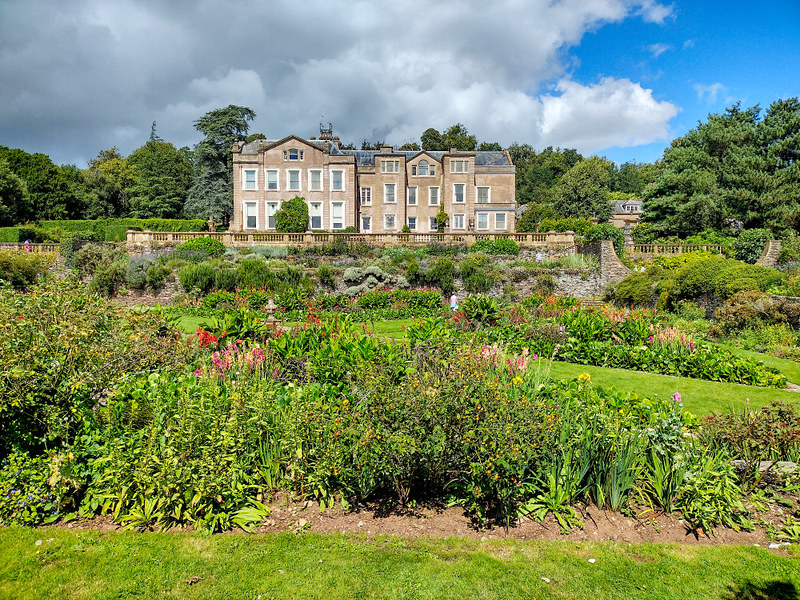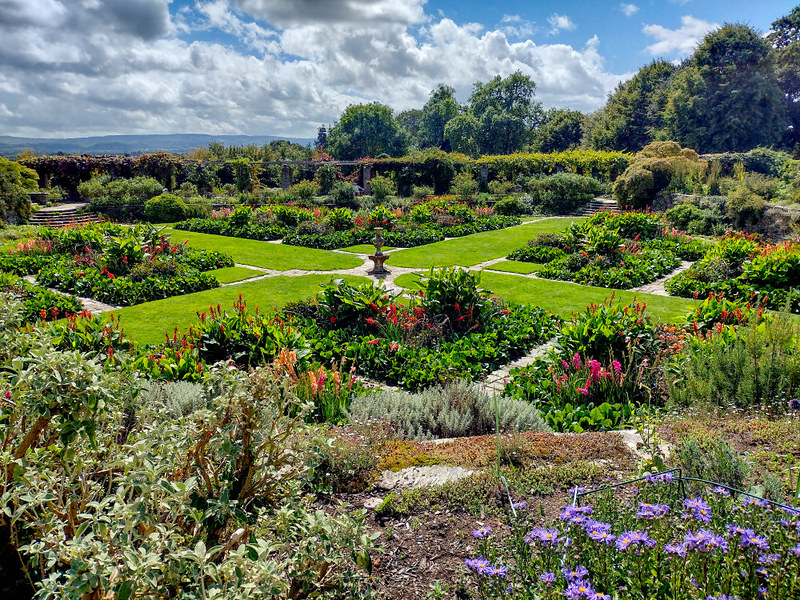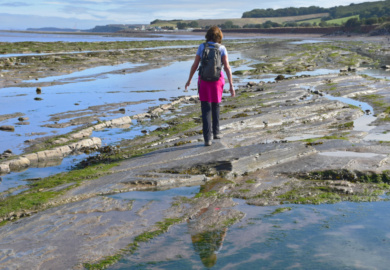Set in 50 acres of rolling Somerset countryside, 4 miles north of Taunton, Hestercombe house and gardens is a feast for the senses at any time of year. Although we’re heading towards the end of August, our visit last weekend revealed vibrant displays of planting and gardens that felt as fresh as spring.
Three centuries of garden design grace the valley and provide startling contrast as you meander through Georgian Landscape Gardens and an enclosed Victorian shrubbery to the magnificent Edwardian Formal Garden. Considered the pinnacle of a collaboration between garden designer Gertrude Jekyll and architect Sir Edward Lutyens, the Edwardian Garden alone makes Hestercombe a must-see Somerset attraction.
The Gardens
Constituting the lion’s share of the land at Hestercombe gardens is the Georgian Landscape Gardens, created by Coplestone Warre Bampfylde in the 1750s. The principle aim of the design is to capture scenes inspired by classical views of Italy, framed like landscape paintings. As you meander the woodland path, stunning views punctuate the greenery, framed by slate columns and stone stairs. Paths ramble through extensive woodland, peppered by an eclectic collection of seats, alcoves and arbours including a Chinese Seat, a Gothic alcove and the Witch House. As a result, there is no shortage of places from which to contemplate the beauty of the valley, the Great Cascade and the three ponds.
Within the Edwardian Formal garden, the Dutch Garden is a riot of colour, shapes and scents surrounding a fountain and half a dozen classical urns, all enclosed within decorative slate walls festooned with climbers. Steps lead to the Orangery which is occasionally used as a wedding venue, and then to the large Victorian Terrace which fronts the house and provides a floral viewing platform over the incredible Great Plat.
The work of garden designer Gertrude Jekyll, this was my favourite part of the garden. The sunken parterre of geometric borders is vibrant in strong colours. When we visited in mid-August, the vivacious displays were of coral and red gladioli and sunset orange cannas set within soft borders hosting the last of the lavenders blended with purple asters and the silver foliage of rosemary and sage.
The House
With a heritage that dates from 682, the handsome Hestercombe House has undergone numerous and extensive renovations over the course of its history, from Medieval to Georgian (the Georgian façade created in in 1730 still fronts the building today) to Victorian. When the last of the family line passed in 1951, the house became the HQ of the Somerset Fire Brigade. Sixty years later, in 2013, it was acquired by Hestercombe Gardens Trust in whose hands it is currently managed.
Today the house stages contemporary art exhibitions and houses a gift shop and a second hand bookshop.
Restoration of Hestercombe Gardens
The Landscape Gardens were established under the auspices of the Warre and the Bampfylde family who owned the estate from 1391 to 1872. The last of the Warre line died in 1872 and the house was acquired by Viscount Portman whose grandson, Edward, commissioned Sir Edwin Lutyens to create a new formal garden with the planting scheme designed by Gertrude Jekyll.
The gardens were neglected for some 70 years, firstly due to occupation by the military during the Second World War, and then when it was occupied by the fire brigade. The formal gardens were looked after by a gardener, but the original planting scheme was gradually lost as borders became more overgrown. It wasn’t until the late ‘60s that work began to restore the Formal Gardens using Gertrude Jekyll’s original planting plans which were found stuffed into a drawer of the potting shed where they had lain undisturbed for 70 years.
The bulk of the Landscape Garden restoration took place between 1995 and 1997 when they were opened to the public for the first time in 125 years. Work is ongoing to continue to restore the gardens to their full 18th century appearance, including the restoration of a water garden whose existence was brought to light by archive research.
When to Visit Hestercombe House & Gardens
The best time to visit is between April and October when the displays morph through their kaleidoscopic glory but winter brings its own treasures; drifts of snowdrops in Rook Wood, and mesmerizing illuminations set to music all through December, not to mention the Christmas market in November, and Father Christmas in December.
You’ll find lots more information on the gardens, along with directions, prices and opening times on the Hestercombe House & gardens website.





